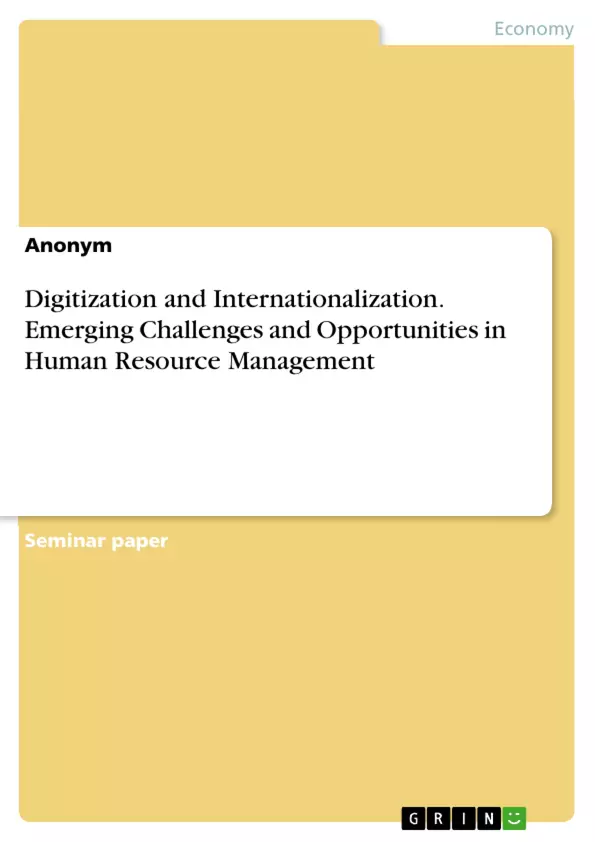This work investigates the effects of digitization and internationalization on global information exchange and the ensuing transformation within corporations. It focuses on innovative business models and the growing significance of integrating new employees in an increasingly digital work environment. The shift in communication methods and work practices are discussed, and the new demands on management in a more international and interconnected world are highlighted.
Inhaltsverzeichnis (Table of Contents)
- Introduction
- Theoretical Foundations
- Classical Integration
- Telework
- Digital Integration of Employees
- Factors Influencing the Onboarding Process
- Leadership Skills
- Leadership at a Distance
- Tools for Leadership at a Distance
- Analysis and Evaluation
- Digital Onboarding
- Management Methods
- Conclusion
Zielsetzung und Themenschwerpunkte (Objectives and Key Themes)
This work explores the implementation of digital integration of employees in the context of an increasingly interconnected world. It aims to examine the opportunities and challenges associated with this new approach to onboarding and management, particularly in light of the growing influence of telework and the impact of the COVID-19 pandemic.
- Digital integration of employees as a key strategy in an increasingly globalized and digitized business environment
- The changing nature of communication and collaboration in the context of remote work
- The role of leadership in fostering successful integration and performance within a digital environment
- The impact of the Corona pandemic on the adoption and implementation of digital integration strategies
- The importance of a structured onboarding process to ensure effective integration and employee retention.
Zusammenfassung der Kapitel (Chapter Summaries)
The first chapter introduces the growing significance of digital integration in a globally interconnected business environment, highlighting the opportunities and challenges associated with this trend. The chapter establishes the importance of employee integration as a crucial element in fostering long-term loyalty and motivation, particularly in the context of remote work.
Chapter two lays out the theoretical foundations of employee integration, contrasting the traditional, in-person approach with the emerging model of telework. The chapter outlines the challenges and benefits associated with both models, emphasizing the need for a tailored approach to onboarding and leadership in the context of digital integration.
Chapter three delves into the specific factors that influence the onboarding process in a digital setting, including the role of leadership skills and the importance of effective communication and collaboration tools. The chapter explores the unique challenges and opportunities associated with leading a geographically dispersed team.
Chapter four examines the analysis and evaluation of digital onboarding strategies, outlining various methods and tools for assessing the effectiveness of these programs. The chapter explores the importance of data-driven insights for improving the integration process and fostering employee engagement.
Schlüsselwörter (Keywords)
Digital integration, onboarding, telework, leadership skills, remote management, communication tools, employee retention, performance, COVID-19, HR management, globalized business environment.
- Citation du texte
- Anonym (Auteur), 2021, Digitization and Internationalization. Emerging Challenges and Opportunities in Human Resource Management, Munich, GRIN Verlag, https://www.grin.com/document/1373929



